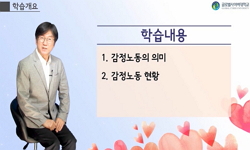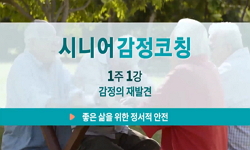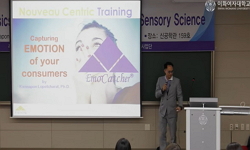The paper defines the concept of emotionality, which is understood here as the total emotional potential. The paper deals with the phenomenon of emotions in a drama. The aspects of emotionality ?the expression of emotions, the description of emotions ...
http://chineseinput.net/에서 pinyin(병음)방식으로 중국어를 변환할 수 있습니다.
변환된 중국어를 복사하여 사용하시면 됩니다.
- 中文 을 입력하시려면 zhongwen을 입력하시고 space를누르시면됩니다.
- 北京 을 입력하시려면 beijing을 입력하시고 space를 누르시면 됩니다.
https://www.riss.kr/link?id=A60254405
- 저자
- 발행기관
- 학술지명
- 권호사항
-
발행연도
2012
-
작성언어
Korean
-
주제어
감정 ; 집단심상 ; 감정 서술 ; 감정 표현 ; 감성 호소 ; 뷜러 ; 감정언어학 ; emotion ; collective image ; emotional description ; emotional expression ; emotional appeal ; Emotionslinguistics
-
등재정보
KCI등재
-
자료형태
학술저널
-
수록면
135-162(28쪽)
-
KCI 피인용횟수
2
- 제공처
- 소장기관
-
0
상세조회 -
0
다운로드
부가정보
다국어 초록 (Multilingual Abstract)
The paper defines the concept of emotionality, which is understood here as the total emotional potential. The paper deals with the phenomenon of emotions in a drama. The aspects of emotionality ?the expression of emotions, the description of emotions and the evocation of emotions- are demonstrated using examples of a NHK Drama Spacial .
Expressions of emotionality in text can be understood as propositons, as individual attitudes to a proposion, or as verbalized experiencebased scenarios. The question is how these elements participate in a text. Emotionality can be identified in a number of apparently non-emotional text structures. Narrative drama text, with its fictional situations and contexts, leads to a reconstruction of the expected emotional script.
But principally, emotions are verbalized feelings. Prior to being expressed, the speaker evaluates a certain fact or subject. This evaluation can evoke various emotions in the speaker. A clear distinction must be drawn between emotions and evaluations. Language offers various means of expressiong emotional attitudes. The most important type of communicative utterance in this regard ist theexpressive words and sentence; expression is a function of the linguistic sign in the sense of Buehlers Organon model of natural language.
For the expressions and descriptions of emotions, words and sentences play a prominet role in the language system. During the course of communication, the speaker may inform the hearer of his emotional state directly, or he may demonstrate this state indirectly using a wide range of elements ? ranging from dress and posture to various linguistic means which may be primarily used for the expression of emotions. Theses means can be analyzed in terms of lexicology, syntax and rhetoric and so on. They include derivatives and compounds and from a pragmatic viewpoint ca offer a vast range of shades of meaning and connotation.
목차 (Table of Contents)
- 〈국문초록〉
- Ⅰ. 들어가는 말
- Ⅱ. 이론적 배경과 언어학적 접근
- Ⅲ. 나레이션을 통한 감정서술과 감정표현
- Ⅳ. 감성자극과 집단심상
- 〈국문초록〉
- Ⅰ. 들어가는 말
- Ⅱ. 이론적 배경과 언어학적 접근
- Ⅲ. 나레이션을 통한 감정서술과 감정표현
- Ⅳ. 감성자극과 집단심상
- Ⅴ. 나오는 말
- 참고문헌
- 〈Abstract〉
참고문헌 (Reference)
1 양태종, "치환무늬의 쓰임새" 한국독일어문학회 13 (13): 349-370, 2005
2 하인리히 F. 플렛, "수사학과 텍스트분석" 동인 2002
3 임성우, "수사적 표현법에 나타난 강조현상- 강조의 두 가지 언어행위론적 효과를 중심으로" 한국독일어문학회 13 (13): 263-282, 2005
4 이복임, "『언덕위의 구름(坂の上の雲)』에 나타난 이분법적 서술법고찰 - 시바 료타로(司馬遼太郞)의 역사관과 관련하여 -" 동아시아일본학회 (34) : 343-361, 2010
5 Vankova, Lenka, "“Zur Kategorie der Emotionalität. Am Beispiel der Figurenrede im Roman ‘Spieltrieb’ von Juli Zeh”" 6 : 9-18, 2010
6 Lausberg, Heinrich, "der literarischen Rhetorik: Eine Einführung für Studierende der klassischen, romanischen, englischen und deutschen Philologie" München 1967
7 Austin, John L, "Zur Theorie der Sprechakt (How to do things with words)" Deutsche Bearbeitung von Eike von Savigny 1975
8 Winko, S, "Zu einer Poetik der Emotionen in lyrischen und poetologischen Texten um 1900" 2003
9 Aschenberg, Heidi, Kontexte in Texten, "Umfeldtheorie und literarischer Situationsaufbau" 1999
10 Fiehler, Reinhard, Kommunikation und Emotion, "Theoretische und empirische Untersuchungen zur Rolle von Emotionen in der verbalen Interaktion" 1990
1 양태종, "치환무늬의 쓰임새" 한국독일어문학회 13 (13): 349-370, 2005
2 하인리히 F. 플렛, "수사학과 텍스트분석" 동인 2002
3 임성우, "수사적 표현법에 나타난 강조현상- 강조의 두 가지 언어행위론적 효과를 중심으로" 한국독일어문학회 13 (13): 263-282, 2005
4 이복임, "『언덕위의 구름(坂の上の雲)』에 나타난 이분법적 서술법고찰 - 시바 료타로(司馬遼太郞)의 역사관과 관련하여 -" 동아시아일본학회 (34) : 343-361, 2010
5 Vankova, Lenka, "“Zur Kategorie der Emotionalität. Am Beispiel der Figurenrede im Roman ‘Spieltrieb’ von Juli Zeh”" 6 : 9-18, 2010
6 Lausberg, Heinrich, "der literarischen Rhetorik: Eine Einführung für Studierende der klassischen, romanischen, englischen und deutschen Philologie" München 1967
7 Austin, John L, "Zur Theorie der Sprechakt (How to do things with words)" Deutsche Bearbeitung von Eike von Savigny 1975
8 Winko, S, "Zu einer Poetik der Emotionen in lyrischen und poetologischen Texten um 1900" 2003
9 Aschenberg, Heidi, Kontexte in Texten, "Umfeldtheorie und literarischer Situationsaufbau" 1999
10 Fiehler, Reinhard, Kommunikation und Emotion, "Theoretische und empirische Untersuchungen zur Rolle von Emotionen in der verbalen Interaktion" 1990
11 Bühler, Karl, "Sprachtheorie" Stuttgart 1982
12 Kiesler, Reinhard, "Sprachliche Mittel der Hervorhebung in der modernen portugisischen Umgangssprache" Heidelberg 1989
13 "Schwitalla, Johannes, Gesprochenes Deutsch, Berlin"
14 Tübingen, "Schwarz-Friesel, Monika, Sprache und Emotion" 2007
15 Jakobson, Roman, "Linguistik und Poetik" Strukturalismus in der Literaturwissenschaft 118-147, 1972
16 Bußmann, H., "Lexikon der Sprachwissenschaft" Stuttgart 2002
17 Hermanns, F, "Kognition, Emotion, Intention. Dimensionen lexikalischer Semantik" 138-178, 1995
동일학술지(권/호) 다른 논문
-
- 서강대학교 인문과학연구소
- 이연순(Lee Yeon-Soon)
- 2012
- KCI등재
-
- 서강대학교 인문과학연구소
- 정인혁(Jung In-hyouk)
- 2012
- KCI등재
-
- 서강대학교 인문과학연구소
- 김숙영(Kim Sookyoung)
- 2012
- KCI등재
-
- 서강대학교 인문과학연구소
- 김면(Myun Kim)
- 2012
- KCI등재
분석정보
인용정보 인용지수 설명보기
학술지 이력
| 연월일 | 이력구분 | 이력상세 | 등재구분 |
|---|---|---|---|
| 2026 | 평가예정 | 재인증평가 신청대상 (재인증) | |
| 2020-01-01 | 평가 | 등재학술지 유지 (재인증) |  |
| 2017-01-01 | 평가 | 등재학술지 선정 (계속평가) |  |
| 2016-12-01 | 평가 | 등재후보로 하락 (계속평가) |  |
| 2012-01-01 | 평가 | 등재학술지 선정 (등재후보2차) |  |
| 2011-01-01 | 평가 | 등재후보 1차 PASS (등재후보1차) |  |
| 2009-01-01 | 평가 | 등재후보학술지 선정 (신규평가) |  |
학술지 인용정보
| 기준연도 | WOS-KCI 통합IF(2년) | KCIF(2년) | KCIF(3년) |
|---|---|---|---|
| 2016 | 0.76 | 0.76 | 0.84 |
| KCIF(4년) | KCIF(5년) | 중심성지수(3년) | 즉시성지수 |
| 0.8 | 0.79 | 1.814 | 0.18 |




 DBpia
DBpia







